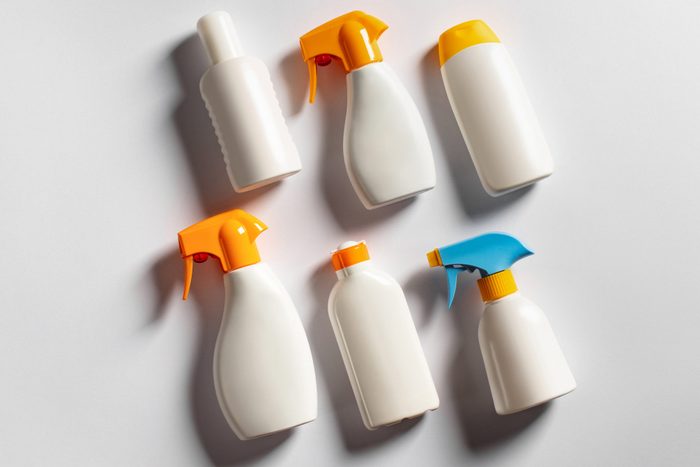
Staying safe in the sun
When you know you’re going to spend the day outside in the summer sun, you reach for some sunscreen or sunblock and head outdoors. But sunny, summer days aren’t the only time you need protection. And when you do slather on lotion, are you really applying enough of the right product in the right places? Even the most diligent people likely make a few mistakes when it comes to sunscreen. Here are many common mistakes and what you should do instead.
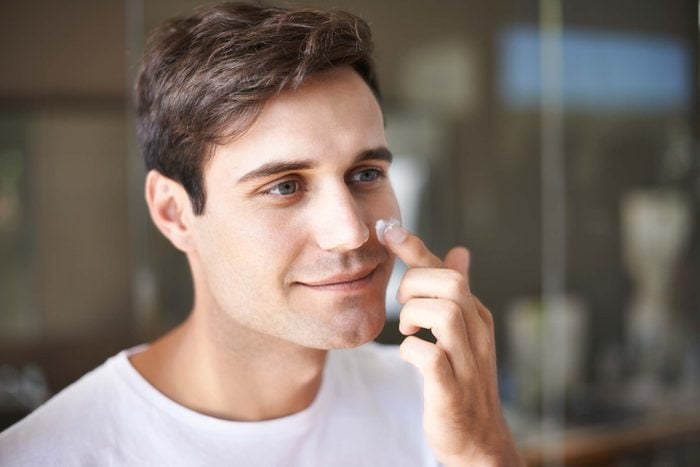
Mistake: You only apply sunscreen when you know you’ll be outside
“Sunscreen should be part of your daily routine 365 days a year. The number-one mistake I see is people using sunscreen only when they go to the beach or spend time outside,” says Cheryl Gustafson, MD, chief dermatology resident at Emory University and spokesperson for the Skin Cancer Foundation. The sun’s rays can still reach your skin, for example, while you drive or sit by a window. Case in point: A study published in the Journal of the American Academy of Dermatology found that more than half of cases of melanoma and Merkel cell carcinoma (two deadly types of skin cancer) occurred on the left side of the body—the side more exposed to UV light when driving. (In Australia, where cars drive on the opposite side of the street, research has found skin cancer is more common on the right side of the body.) To get in the habit of applying sunscreen every day, Dr. Gustafson suggests finding a body and facial moisturizer that contains at least SPF 15. Apply it daily after you shower.
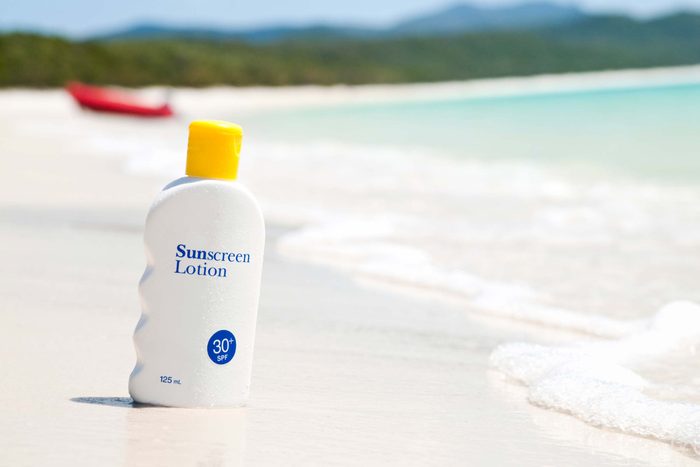
Mistake: You assume applying a high SPF means you can spend more time in the sun
If you coat yourself in SPF 75 or 80, you can safely stay out in the sun longer, right? Um, no. Some people believe that very high SPF numbers let you stay outside in the sun for a long period of time, giving them a false sense of security.
One study published in the International Journal of Cancer found that people who used an SPF 30 spent up to 25 percent longer in the sun than those who slathered on SPF 10, which means a greater risk of sunburn as well as skin damage you can’t see. Stick to SPF 30 and reapply at least every two hours, or more frequently if you’ve been in the water, says Dr. Gustafson.
The Skin Cancer Foundation also recommends a minimum of SPF 30, which blocks 97 percent of UVB rays, and a maximum of SPF 50, which blocks 98 percent of the sun’s UVB rays. (Quit falling for these 10 sunscreen myths that make dermatologists cringe.)
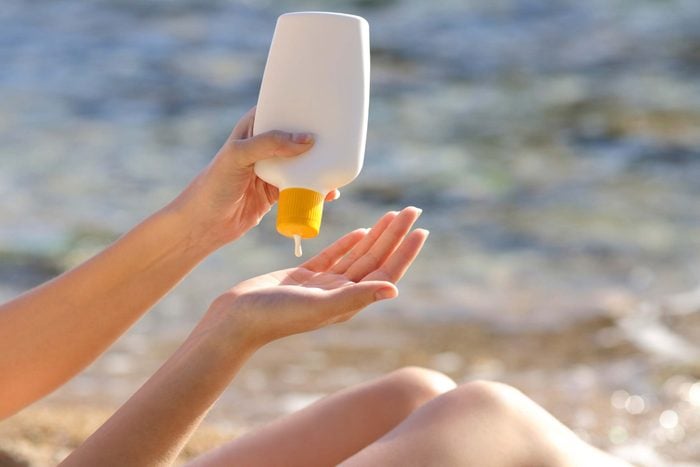
Mistake: You don’t use enough sunscreen
If you’re applying enough, you should restock your sunscreen supply several times each summer. A golf ball-sized squirt is the perfect amount of sunscreen to cover your entire body, says Dr. Gustafson. That translates to using between one-quarter to one-half of an eight-ounce bottle—per person—during a long beach day. Research shows most people apply only 25 to 50 percent of the amount of sunscreen used during testing, which means your actual SPF coverage is about one-third of what’s on the label. (In other words, an SPF 30 is only as strong as an SPF 10 if you don’t apply it thoroughly.)
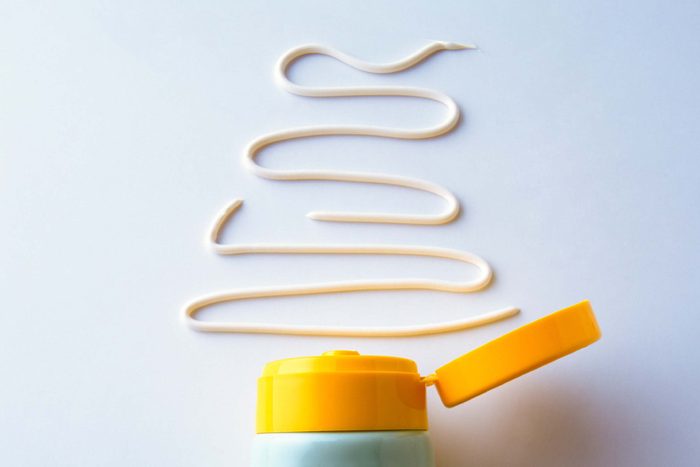
Mistake: You use lotion that’s been in your beach bag forever
Check the bottle’s expiration date before you rub on old lotion. Expired sunscreen may not provide proper protection because the chemicals become inactive over time. If there’s no expiration date stamped on the bottle, write the date you bought it on the side. Have a tube stashed in your glove compartment or trunk all summer? Toss it. Sunscreen is effective for three years as long as it’s stored safely, according to Consumer Reports. Heat can cause the active ingredients to break down, rendering them less effective and leaving your skin at risk.
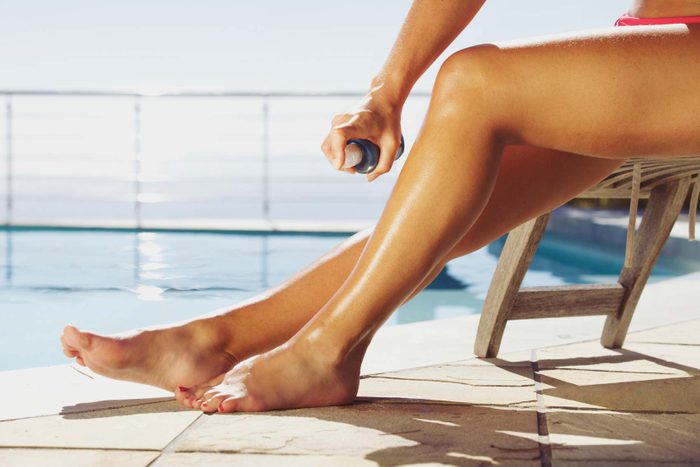
Mistake: You only use spray sunscreen
Spray sunscreens might seem convenient, but their potential health risks still haven’t been fully investigated. Safety experts at Consumer Reports are concerned about the effects of accidentally inhaling the spray’s ingredients, particularly on children. They recommend spraying sunscreen into your hand first, then rubbing it on your body. What’s more, it’s hard to apply spray sunscreen evenly when it’s windy out (which is commonly the case at the beach). Apply more than one coat and rub in well to be safe. (Check out these other 12 surprising things that up your risk of sun damage.)
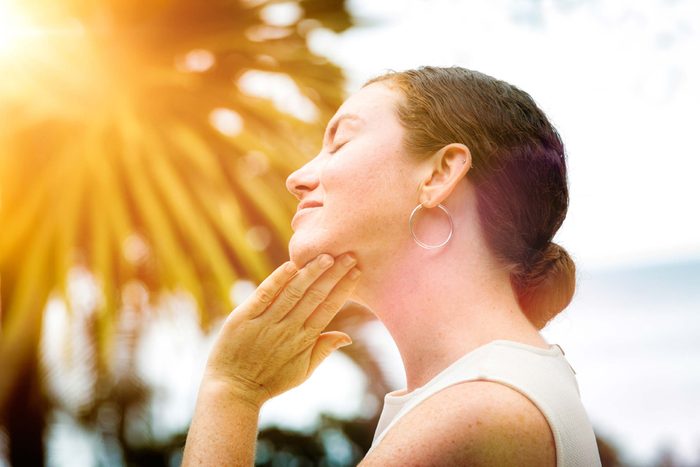
Mistake: You miss common spots like the ears, scalp, and lips
You need to cover more than your arms, legs, chest, and back with sunscreen. Dr. Gustafson says she often sees patients develop skin cancer on commonly missed areas like the scalp, ear, lips, front and back of neck, backs of hands, and top of the feet. Basal or squamous cell cancers (slow-spreading cancer in the outer layer of skin) most commonly affect these areas because they’re frequently exposed to sun. Look for lip balms with SPF included and reapply every 90 minutes to two hours, she says. While there are sunscreens specifically for the scalp, you can also use a spray and rub it in. (These are surprising places you didn’t realize you could get skin cancer.)
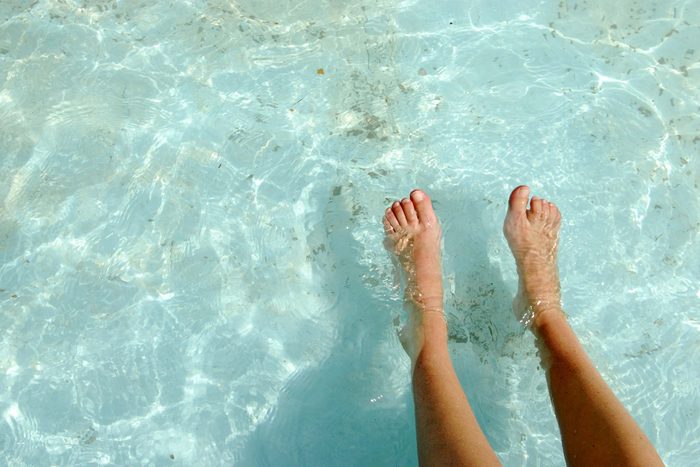
Mistake: You apply sunscreen after you get to the pool
A better move: Apply it at home before you head outdoors. For one thing, this gives your skin time to absorb the sunscreen, which is necessary for sunscreen to do its job—either deflect or absorb UV light, depending on the type. For another, you’ll be less likely to miss a spot if you take the time to do it at home before you’re rushed and distracted while out and about. (Find out what all those labels on your sunscreen really mean.)

Mistake: You apply sunscreen after you get dressed
If you’ve ever slathered on sunscreen before a day at the beach, then noticed little burned areas right around your swimsuit straps or leg openings, you already know it’s better to put sunscreen on first, then the suit. But you’re probably not following the same strategy on non-beach days. “If you’re trying to protect your neck or upper chest, it makes sense to apply sunscreen to your neck, arms, and forearms before you put your blouse or shirt on,” says Ingrid C. Polcari, MD, assistant professor of dermatology at the University of Minnesota Medical School in Minneapolis. Straps move, sleeves and necklines shift … and if you are putting on sunscreen after you’re dressed and don’t want to stain your clothes, you’re likely to miss some spots where your clothing meets your skin. (Here are the critical spots that dermatologists wish you’d remember to apply sunscreen.)

Mistake: You only put on sunscreen in the morning
Reapplying sunscreen is a no-brainer on beach days, but you’re not only exposed to ultraviolet rays when you’re sunbathing. Dermatologists recommend reapplying sunscreen every two hours, every day. If you put sunscreen on before you go to work and don’t reapply it, you’re not fully protected when you go outside at lunchtime or head home after work. “And if you work in an office with a window, particularly if you have a corner office, the windows filter out UVB light, so you won’t get burned, but you’re still getting the UVA light that increases your risk of skin cancer, premature aging, wrinkling, brown spots, and skin sagging,” says Arielle N.B. Kauvar, MD, a board-certified dermatologist in New York and spokesperson for the Skin Cancer Foundation.
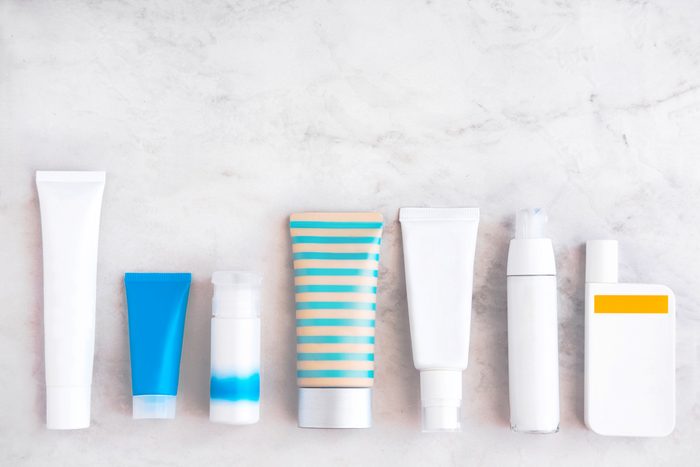
Mistake: You think most sunscreens are are the same
They’re not—chemical sunscreens are made with ingredients such as oxybenzone, avobenzone, and octyl salicylate (octisalate), which absorb ultraviolet light and change the wavelength to prevent skin damage. Physical sunscreens—usually zinc oxide or titanium dioxide—actually block sunlight by reflecting the light away from your body. Physical sunblocks tend to be more hypoallergenic and better for sensitive skin because zinc oxide and titanium dioxide are large molecules that don’t get absorbed.
“But they’re more messy to apply,” says Dr. Polcari, adding that these products used to be thick and chalky looking, but new formulations have improved the texture and color. There’s some controversy about the safety of chemical sunscreens, which some say might trigger allergies or disrupt hormones, though most dermatologists believe they’re very safe if applied as directed. “And they’re much more user-friendly,” Dr. Polcari says. The final consideration is an environmental one. Hawaii has already taken steps to ban sunscreens containing oxybenzone or octinoxate, which have been linked to coral reef damage, so eco-conscious buyers in other states might want to avoid those too. Check out these reef-safe sunscreens you can swap your old ones for.
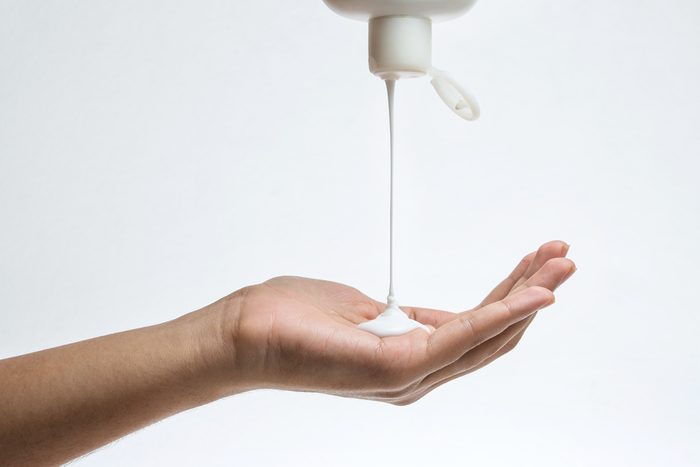
Mistake: You don’t always use a broad-spectrum sunscreen
The SPF number on sunscreen bottles is a measure of how well the product protects skin against UVB rays—not UVA. “Many sunscreens don’t do a very good job of protecting against UVA,” says John G. Zampella, MD, a dermatologist at NYU Langone Health. Look for a bottle that says “broad spectrum,” which indicates the formula will also protect against UVA rays. Still, a product’s effectiveness at screening out UVA rays is generally only about a third of its SPF. So if you get a sunscreen with an SPF of 30, it may only have an equivalent UVA protection of about 10—and that’s only if the bottle says broad-spectrum.
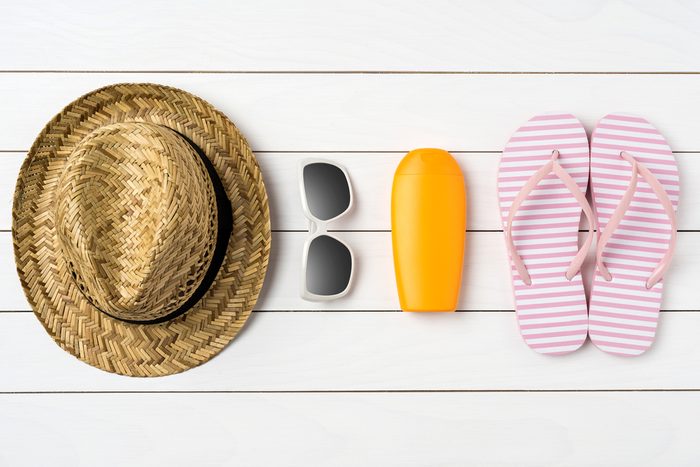
Mistake: You choose an SPF that’s too low
“The American Academy of Dermatology recommends an SPF of at least 30, and dermatologists argue about whether or not people should go higher,” says Dr. Zampella. Some dermatologists urge higher SPFs because most people don’t use enough product to get the full benefit. Dr. Zampella points to a study that makes an even more compelling case for higher SPFs: “They put an SPF 100 sunscreen on half of the face, and an SPF of 50 on the other half, and then exposed people to sunlight,” he says. “The SPF 100 half did do better than the SPF 50 half, which is pretty good data that using a higher SPF might be a reasonable thing to do.”

Mistake: You use less sunscreen because your skin is darker
While it’s true that darker skin has some natural protection against burning and skin cancer, it’s a myth to think that skin color alone is enough to prevent melanoma and other skin cancers. And relying on the partial protection of darker skin color can be very dangerous. “Because of the general idea that darker skin has less risk, when skin cancer is diagnosed on darker skin, it’s usually diagnosed at a later stage,” says Dr. Polcari. “The same recommendations for sunscreen protection—SPF of at least 30, reapplied every two hours—apply to everyone, no matter what their skin tone.”
Plus, sunscreen can prevent cosmetic complaints, adds Mona Gohara, MD, a Connecticut-based dermatologist and instructor at the Yale School of Medicine. “The number one reason people of color visit the dermatologist is because of hyperpigmentation—melasma and discoloration—and using a sunscreen helps protect against that,” she says. (Don’t miss these other skin cancer myths you need to stop believing.)
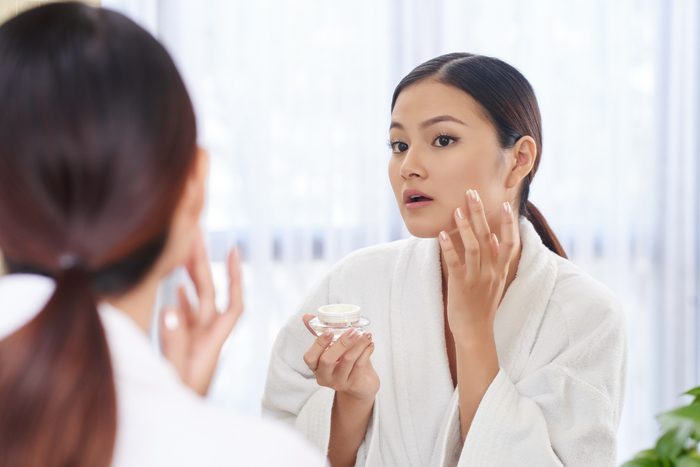
Mistake: You rely on the sunscreen in your moisturizer or makeup
Dermatologists agree that sunscreens in moisturizers and makeup are a good thing: “I encourage my patients to use these products,” says Dr. Zampella. “Anything that minimizes steps and makes it easy for sunscreen to be part of your routine is good. And when you’re applying it to your face, you can also use it on your hands, the back of your neck, and the tops of your ears.” However, for a moisturizer or makeup foundation sunscreen to be truly effective, you’ll need to read the labels and make sure it has both an SPF of 30 or higher and broad-spectrum protection—and then reapply it all day. “The sunscreens in moisturizers or cosmetics aren’t always water resistant, so they won’t provide particularly long protection if it’s hot and humid outside,” adds Dr. Kauvar.
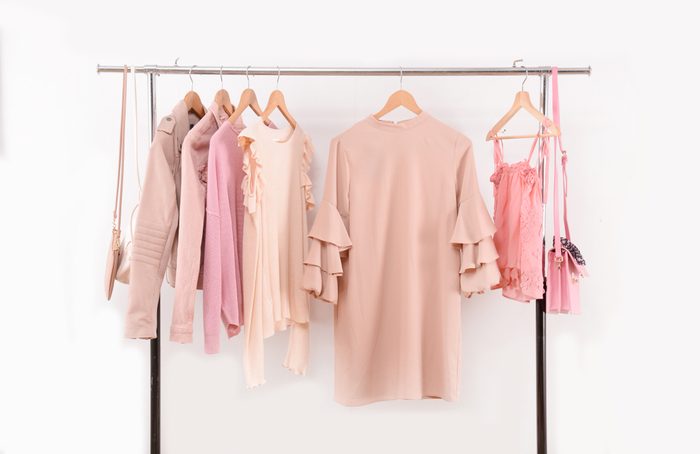
Mistake: You expect your summer clothes to block the sun
“It’s unfortunately common for people to get melanomas on the trunk,” says Dr. Gohara. “You might be wearing a T-shirt and think you’re protected, but you’re really not.” Many light summery fabrics don’t provide much sun protection at all. “The rule of thumb is the tightness of the weave,” says Dr. Kauvar. “If you hold fabric up to the light and can see through it, so can the sun.”
A white T-shirt, for example, only has a UPF (ultraviolet protection factor—a measure of the UV radiation that penetrates fabric) of about seven. And if that T-shirt gets wet, such as from sweat, the protection is even lower. Some fabrics, especially those like rash guards or swim shirts made for outdoor activities, are engineered to provide good protection. “But watch out for the perforations in some athletic material,” says Dr. Kauvar. Those tiny holes may help you feel cooler while exercising, but if you don’t use sunscreen underneath the shirt, you can wind up with a speckled sunburn.
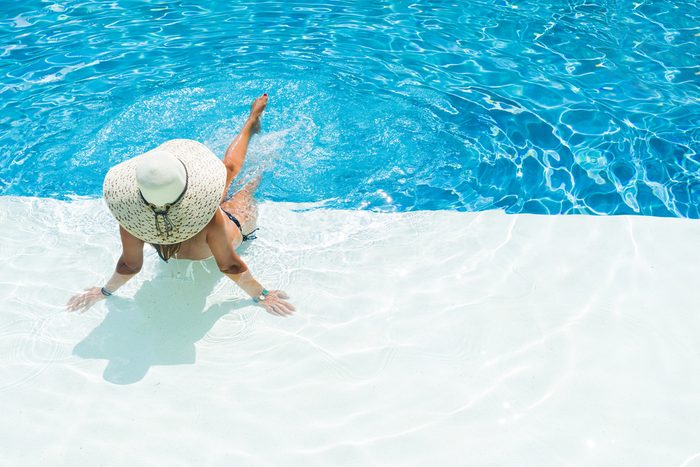
Mistake: You overestimate how water resistant your sunscreen is
There’s no such thing as a waterproof sunscreen, and manufacturers aren’t allowed to make those claims on labels. Instead, they can now say that a product is water resistant for 40 to 80 minutes. “What makes a product water resistant is generally an ingredient that makes it stickier, so it won’t wash off as quickly,” explains Dr. Zampella. “But you still have to reapply it every two hours.” And if you’ve been swimming or sweating for longer than the sunscreen’s 40 or 80 minutes of water resistance, you’ll want to reapply even sooner. (Find out how to choose the best sunscreens for any activity.)
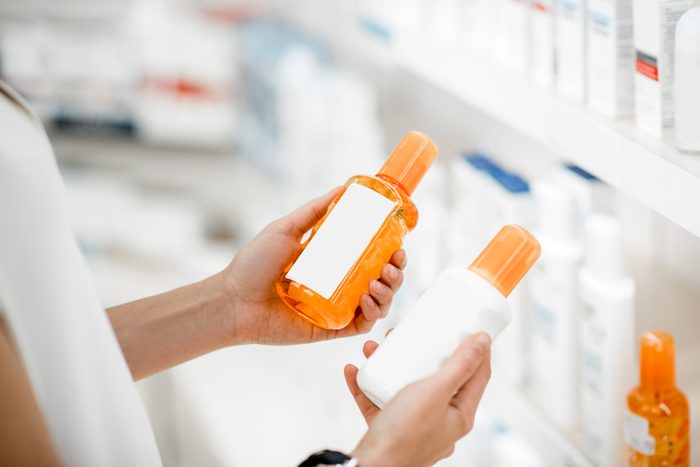
Mistake: You assume expensive sunscreens work better
You get what you pay for, right? Not necessarily. “A more expensive sunscreen might be more cosmetically appealing because the company has spent more money to make sure it smells and feels elegant,” says Dr. Gohara. “But with sunscreens, it’s all about how much ultraviolet light can penetrate to the skin, and that doesn’t cost more.” Bottom line: Don’t assume that just because you’re paying more, you’re getting a better sunscreen. While the price may be a factor in your choice of sunscreen, just as important is to read the label and choose the product with the protection you need. (These are some of the most important things to look for in a sunscreen.)

Mistake: You don’t use sunscreen year-round
First—although UVB light decreases a lot in winter, UVA is consistent year-round. “I tell my patients that if they can see their hand in front of their face, there’s enough ultraviolet light to create wrinkles and skin cancer,” says Dr. Gohara. Even more startling are new findings showing that other kinds of light we’re exposed to year-round might be a risk. “There’s evidence that skin may be damaged by light from fluorescent bulbs, computer screens, phone screens,” says Dr. Zampella. “It’s not a lot of light, but it can add up over time. So using a broad-spectrum sunscreen every day, all year is smart.” (No matter what the season, watch out for these 12 signs you just bought the wrong sunscreen.)
